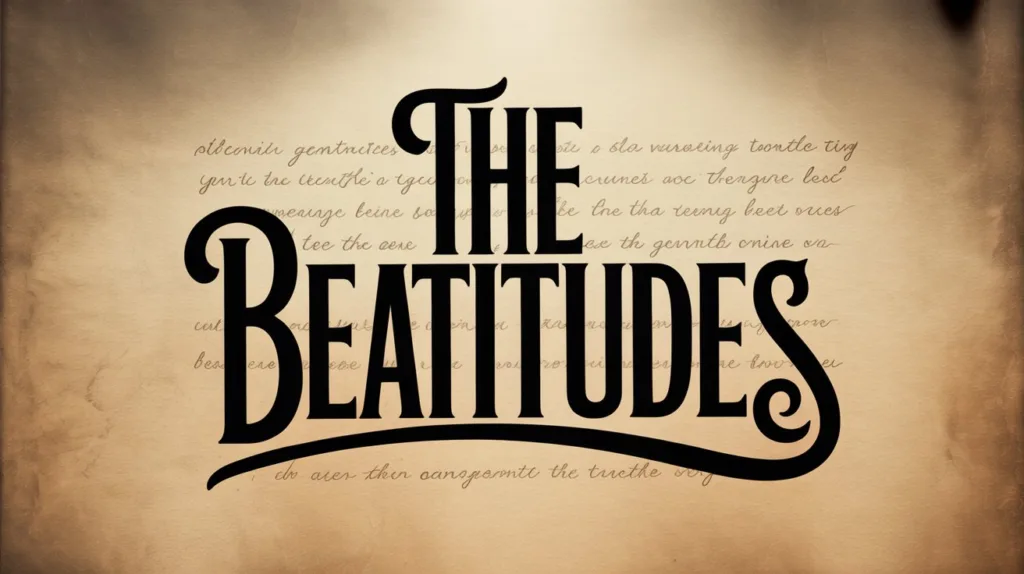The Bible frequently uses “right hand” and “left hand” symbolically to convey deeper spiritual truths. The right hand represents honor, authority, power, and favor, while the left hand often symbolizes judgment or lesser status. Let’s explore this concept in Scripture, revealing its profound significance, and conclude with a thought-provoking reflection on its application today.
The Right Hand: Honor and Authority
Scripture is clear that the right hand holds a place of honor and power. Jesus, after His resurrection, ascended to the right hand of the Father, signifying His authority and glory.
- Mark 16:19: “So then, after the Lord had spoken to them, He was received up into heaven, and sat down at the right hand of God.”
- Acts 7:55-56: Stephen, filled with the Holy Spirit, gazed into heaven and saw Jesus standing at the right hand of God, a position of supreme honor.
- Ephesians 1:20-21: “[God] raised Him from the dead and seated Him at His right hand in the heavenly places, far above all principality and power and might and dominion.”
The right hand also represents God’s power and deliverance:
- Exodus 15:6: “Your right hand, O LORD, has become glorious in power; Your right hand, O LORD, has dashed the enemy in pieces.”
- Psalm 16:11: “At Your right hand are pleasures forevermore.”
- Isaiah 41:10: “Fear not, for I am with you; Be not dismayed, for I am your God. I will strengthen you, Yes, I will help you, I will uphold you with My righteous right hand.”
In biblical thought, the right hand is the place of privilege, authority, and honor (a place no one else can claim except Jesus Christ, the Son of God).
The Left Hand: Judgment and the Lesser Role
While the right hand is associated with honor, the left hand often represents judgment or the absence of divine favor. No one is said to sit at the left hand of God, as the left hand is not a place of glory or authority.
Jesus gives a stark illustration of the separation between the right and the left in the parable of the sheep and the goats:
- Matthew 25:33: “And He will set the sheep on His right hand, but the goats on the left.”
- Matthew 25:41: “Then He will also say to those on the left hand, ‘Depart from Me, you cursed, into the everlasting fire prepared for the devil and his angels.'”
The left hand is a place of judgment, reserved for those who reject God’s grace and persist in unrighteousness. This division emphasizes the contrast between the saved and the lost, between those who submit to God and those who rebel against Him.
Right Hand and Left Hand: Representing Right and Wrong
The Bible also uses the right hand and left hand to symbolize righteousness and wickedness, or obedience and disobedience. This metaphor illustrates the moral choices humanity faces.
- Ecclesiastes 10:2: “A wise man’s heart is at his right hand, but a fool’s heart at his left.” This verse clearly links wisdom with the right and foolishness with the left.
- Proverbs 3:16: Speaking of wisdom: “Length of days is in her right hand, in her left hand riches and honor.”
Moreover, Jesus warned His followers about wavering between right and wrong, symbolized by turning away from the path of righteousness:
- Matthew 6:3: “But when you do a charitable deed, do not let your left hand know what your right hand is doing.” This reinforces the idea that the right hand is tied to virtue and honor.
The Christian Right vs. the Secular Left: Food for Thought
It’s fascinating to consider how these biblical concepts might align with modern political and cultural divisions. The Christian right often emphasizes moral responsibility, biblical values, and God’s authority (principles that align with the symbolic meaning of the right hand as a place of honor and righteousness). Meanwhile, the liberal left frequently advocates for ideologies that reject biblical truth, embracing relativism and human authority over God’s Word.
While we must be cautious about oversimplifying these associations, the parallels are worth reflecting on. As believers, we are called to stand on the side of righteousness, aligned with God’s truth, and reject the path of compromise that leads to judgment.
My Final Thoughts
The Bible’s depiction of the right hand and left hand underscores profound spiritual realities. The right hand is the place of honor, authority, and righteousness, while the left hand represents judgment and separation. Jesus, seated at the right hand of the Father, is the ultimate example of this truth.
As Psalm 110:1 declares, “The LORD said to my Lord, ‘Sit at My right hand, till I make Your enemies Your footstool.'” In the end, the right hand represents where we should aim to be: in submission to Christ, walking in righteousness, and living for His glory. Let us be wise, keeping our hearts on the right and striving always to reflect the honor of the One who holds all power and authority in His righteous right hand.
“The wise man’s heart is at his right hand” (Ecclesiastes 10:2). Let’s choose to stand on God’s side, on the side of truth and righteousness.





 Get the book that teaches you how to evangelize and disarm doctrines from every single major cult group today.
Get the book that teaches you how to evangelize and disarm doctrines from every single major cult group today.